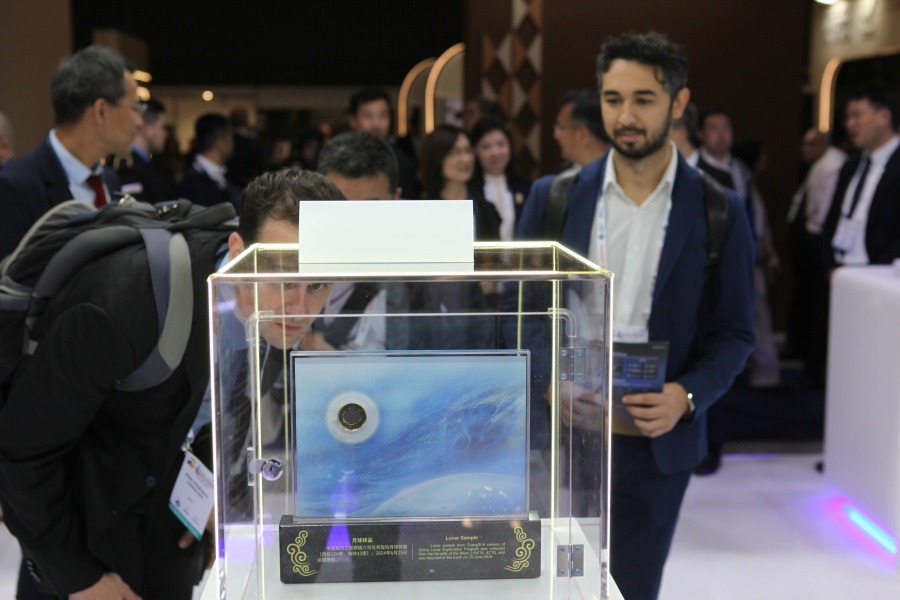Chinese makeup brands sitting pretty in Japan
Leading names still face fierce competition as big markets have established players
By Wang Zhuoqiong | China Daily | Updated: 2023-12-30 16:36

Leading names still face fierce competition as big markets have established players
Joshino Asami, a leading influencer on TikTok in Japan and an entrepreneur, began marketing Chinese cosmetics two years ago after she found Chinese-style makeup items popular among her followers.
Asami, with more than 300,000 followers on TikTok, once sold 4,300 Chinese-branded moisturizing facial masks in just one hour. Now she goes live on TikTok five or six times a week, two or three hours each time. Two of these occasions feature Chinese cosmetics.
"Chinese cosmetics products have not gone to the mainstream level in the market so far. But they have become the talk of the town," said Asami.
She said some of her customers aged between 20 and 30 often pick up Chinese cosmetics brands such as Florasis.
"Most Chinese cosmetics products are packaged with lavish designs and have good quality," she said.
Asami is among a rising number of Japanese marketing professionals promoting Chinese cosmetics brands.
According to MoldBreaking, a cosmetics brand management firm based in Shanghai, Japan's cosmetics market is likely to see Chinese brands achieve some 150 billion Japanese yen ($1.05 billion) worth of business in the next five years.
Chinese makeup firms have been trying to penetrate foreign markets since 2008 when Herborist, a unit of Shanghai Jahwa United Co Ltd, entered the European market through Sephora, a leading retailer owned by LVMH.
In recent years, Chinese cosmetics brands, which have seen revenue fall at home, are reluctant to compete in the United States or Europe, and have instead shifted their focus to Asia, particularly Japan, where consumption culture and aesthetics share some similar characteristics.
For example, this year, Florasis — a leading makeup brand based in Hangzhou, Zhejiang province — launched its first pop-up store in Japan, featuring its key face powder and lipstick products. The event went viral on social media platforms.
Fanggong Yiliu, chief marketing officer of Flower Knows, said the brand began using pharmacies and domestic shops in the Japanese market through an offline agency in 2019 to market its products.
They chose Japan as the first overseas expansion attempt as styles there are a good match.
What made Florasis break out in Japan was its collaboration with MoldBreaking to market on TikTok and in popular local cosmetics magazines, making the brand the most talked about in 2021.
Chinese brands have also changed their designs to better suit local styles.
For example, Colorkey, positioned as a trendy and stylish brand in China — thanks to support from MoldBreaking — was designed to be more "super cute" in both advertising and in marketing campaigns, which proved a success in Japan.
Guo Xiruo, CEO of MoldBreaking, a company launched to facilitate Japanese cosmetics brands' marketing in China, has shifted his focus to Japan. In 2018, Guo discovered some Japanese influencers had copied a number of Chinese makeup concepts such as a "peachy look", a trend that later boosted the emergence of Chinese cosmetics names such as Zeesea and Carslan.
In the second half of 2021, Chinese-style cosmetics became more visible in Japan, with the presence of three leading Chinese brands — Florasis, Perfect Diary and Flower Knows.
In Japan, MoldBreaking has collaborated with leading Chinese brands including Florasis, Flower Knows and Colorkey. Guo said Chinese cosmetics brands may perform very well in the Japanese market in the next five years. "The maturity and penetration of the cosmetics sector in Japan bring massive opportunities," Guo said.
But marketing in Japan requires approaches different from what has been done in China, said Guo.
"There is no shortcut in Japan," said Guo. "It takes time and patience to get through every procedure and work with various distribution and retail channels."
To thrive in Japan, a brand must grow from both online and offline retailing channels including e-commerce platforms, official local websites and brick-and-mortar retailers, said Guo.
"Local consumers still search by Google or click advertisements to reach brands. When they do buy online, they compare products and prices at multiple e-commerce platforms, with no single platform taking a majority," he said.
Third-party platforms are good to lure new consumers, but they have growth ceilings in terms of number of consumers.
Therefore, operating one's own local website is vital for brands in Japan to acquire repeat customers, Guo said.
Orbis, a Japanese brand, has generated 80 percent of its revenue from its in-house website, some 2 billion yuan ($280 million), Guo said, while a new makeup brand would be able to reach top seller status on Amazon in Japan with annual revenue of under 30 million yuan.
"An official website serves as an e-commerce channel and a portal to gather information for members and subscribers," he added.
Digital marketing is also new in Japan due to higher costs in delivery and return policies of products, and most promotions and distribution still rely on brick-and-mortar shops where nearly 90 percent of makeup consumption happens, said Guo.
Asami said Chinese brands should focus on their most popular items to raise brand recognition.
MoldBreaking has developed a mix of top products from various cosmetics brands in special sections called "Chinese style zones", located in makeup shops and featuring items such as face powders from Florasis, Into You lip gloss and eye shadow from Perfect Diary.
Guo said that both in Southeast Asia and Japan, online e-commerce has enjoyed limited development. The region's economy is powered by tourism, with such shoppers preferring offline purchases. The region has developed a vast network of retailers concentrated along shopping streets.
In Southeast Asia, where hiking prices are still challenging in the local cosmetics sector, it is difficult for brands such as Florasis to copy their domestic business models, Guo said.
But a lack of effective fashion trends from Chinese pop culture is part of the reason for Chinese brands finding it hard to establish a significant market beachhead in Japan, said Asami.
"Young people in Japan have been more inspired by television shows, movies or pop songs from South Korea. It is therefore easier to make South Korean products appealing to Japanese consumers," she said.
Not many things happen overnight in Japan.
"It takes a lot of effort every single day, online and offline, to add exposure and expand access — including pop-up stores and test-runs — to establish overall trust and recognition among consumers," she said.
























